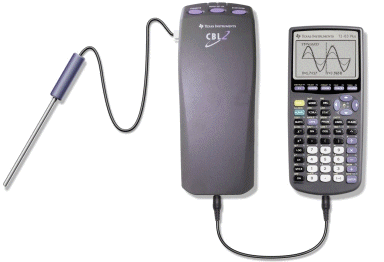
Math-Science-Technology Integration: Dealing With Data
Page made especially for the Teachers and Students at U.T.H.S. Summer 2006 Workshops and Academy

 |
Math-Science-Technology Integration: Dealing With DataPage made especially for the Teachers and Students at U.T.H.S. Summer 2006 Workshops and Academy |
 |
Our goal is for students and teachers at the academy to:
- Use probes and graphing calculators to collect, organize, analyze, and summarize real-world data.
- Understand and experience the scientific method and Illinois Learning Standard Goal 11.
- Improve their understanding of measurement (Illinois Learning Standard Goal 7) and understanding of Data Analysis (Illinois Learning Standard Goal 10).
- Learn to use calculators and computers to present results.
- Gain a better understanding of the Applications of Learning (from the Illinois Learning Standards). In particular:
- Solving Problems - Recognize and investigate problems; formulate and propose solutions supported by reason and evidence.
- Communicating - Express and interpret information and ideas.)
- Using Technology - Use appropriate instruments, electronic equipment, computers and networks to access information, process ideas and communicate results.
- Working on Teams - Learn and contribute productively as individuals and as members of groups.
- Making Connections - Recognize and apply connections of important information and ideas within and among learning areas.
- Understand that a lab report has four parts:
- Question
- Procedure
- Data Collection and Analysis
- Conclusions.
Students at the academy will:
- Use probes connected to the calculator to collect data from the environment.
- Manually enter data into a calculator (STAT | EDIT).
- Display a graph of data on a calculator (STAT PLOT).
- Calculate mean of a data set on a calculator (STAT | CALC).
- Use TI-Connect cable and software to transfer data from the calculator to the computer.
- Use the computer to communicate results (for example, printing/displaying data and graphs using Word or PowerPoint).
- Communicate understanding of scientific experiments and results at a science fair (on Friday, July 28).
Texas Instruments Calculators
- TI Calculators - Many resources for teachers and students. Helpline: 800-TI-CARES (800-842-2737)
- TI-Connect Software - download page. Note: you need Version 1.6 to use TI-Connect with the TI-84 Calculator. You should uninstall any old version of TI-Connect before downloading and installing the new Version 1.6.
Vernier Software and Technology
- Vernier - they sell probes and software for use with Texas Instruments calculators.
Scientific method or scientific process (from Wikipedia) refers to a body of techniques for the investigation of phenomena and the acquisition of new knowledge of the natural world, as well as the correction and integration of previous knowledge, based on observable, empirical, measurable evidence, and subject to laws of reasoning.
Although specialized procedures vary from one field of inquiry to another, there are certain common aspects. Scientific researchers propose specific hypotheses as explanations of natural phenomena, and design experimental studies that test these predictions for accuracy. These steps are repeated in order to make increasingly dependable predictions of future results. Theories that encompass whole domains of inquiry serve to bind more specific hypotheses together into logically coherent wholes. This in turn aids in the formation of new hypotheses, as well as in placing groups of specific hypotheses into a broader context of understanding.
James R. Olsen,
Western Illinois University
E-mail: jr-olsen@wiu.edu
Page last updated:
June 1, 2006